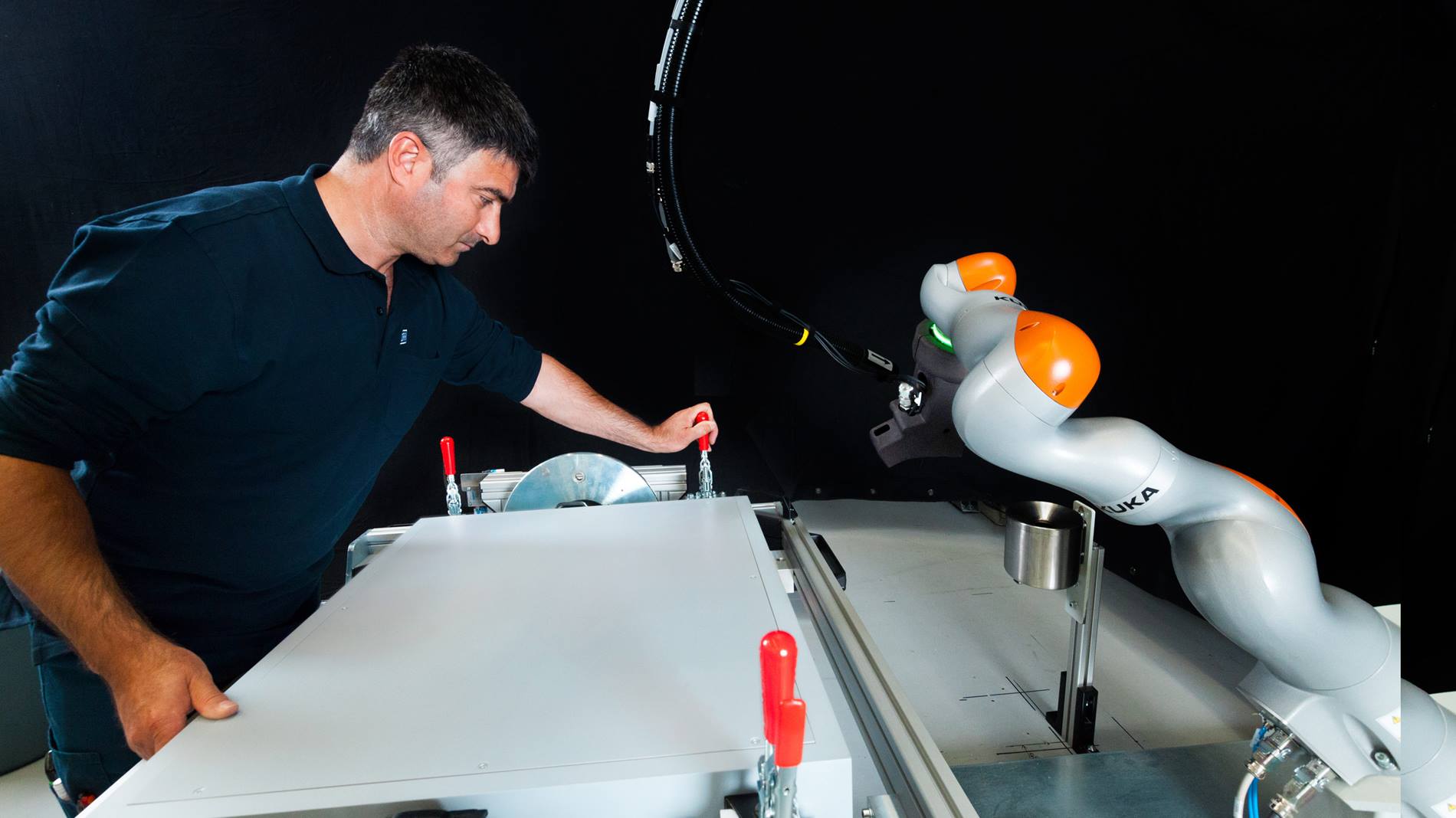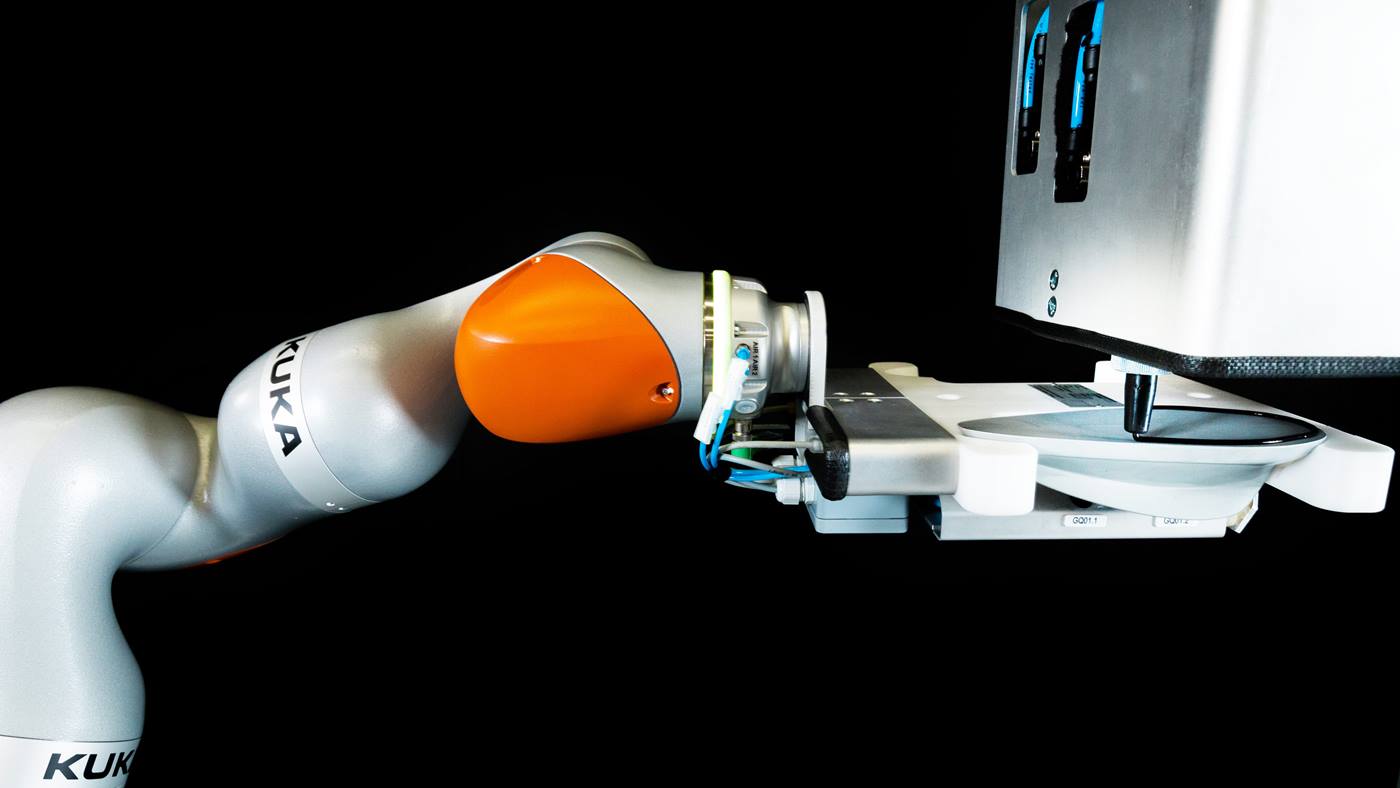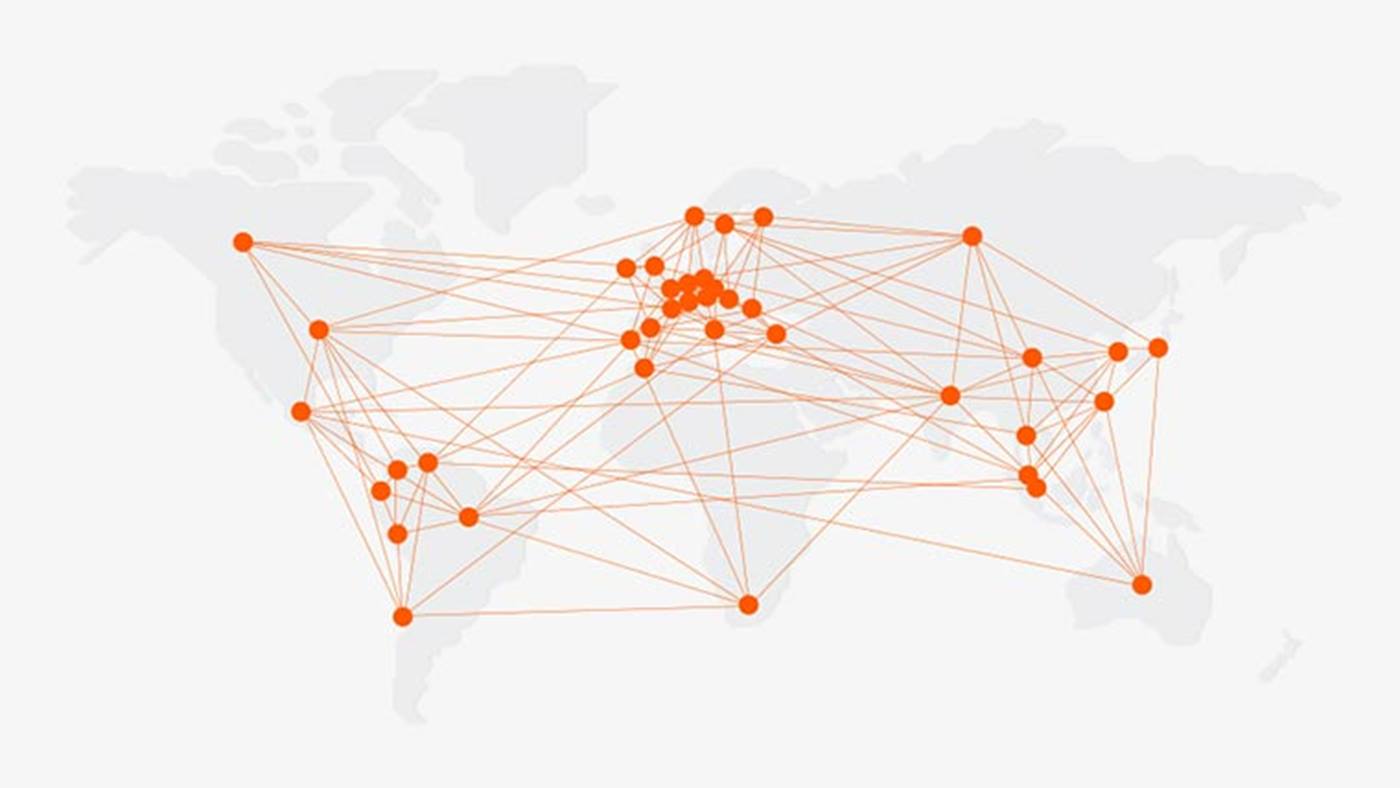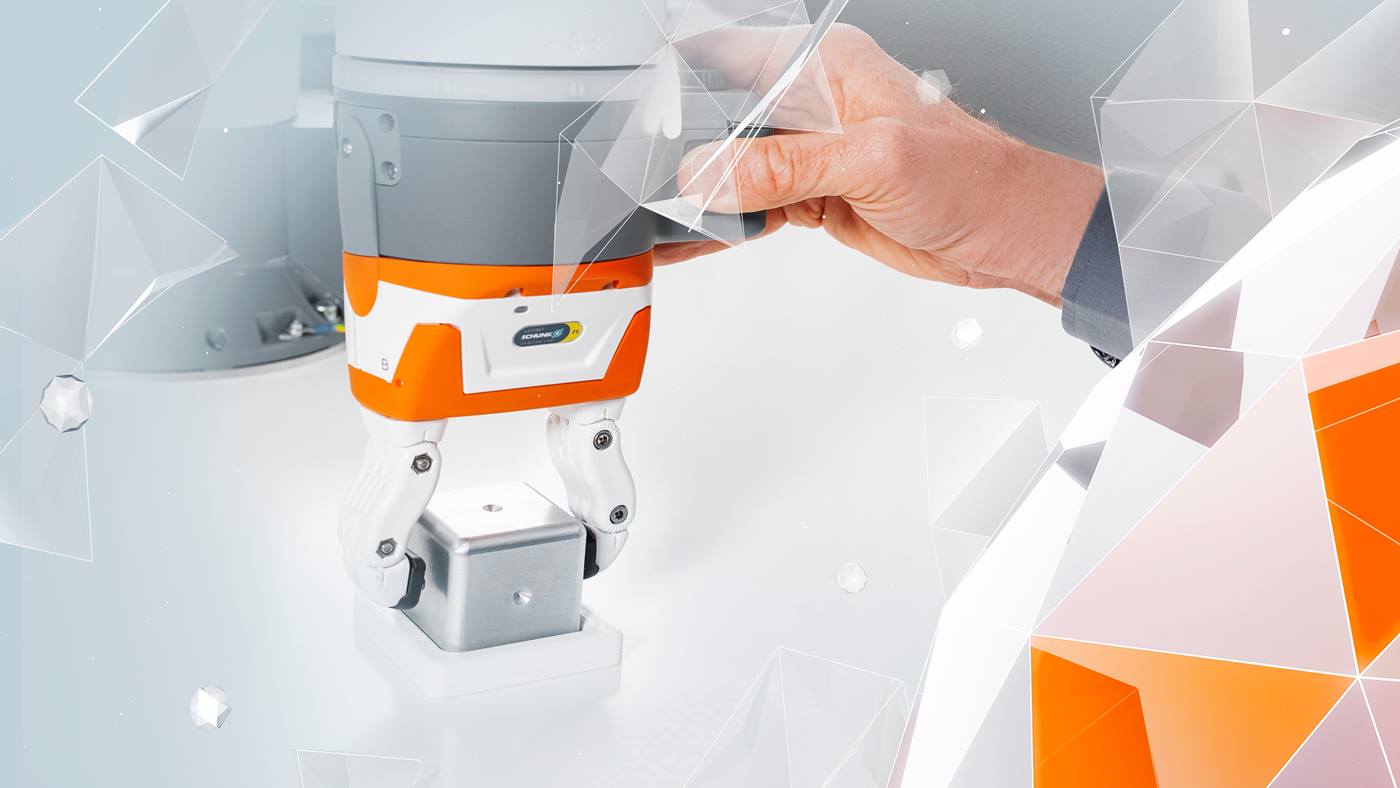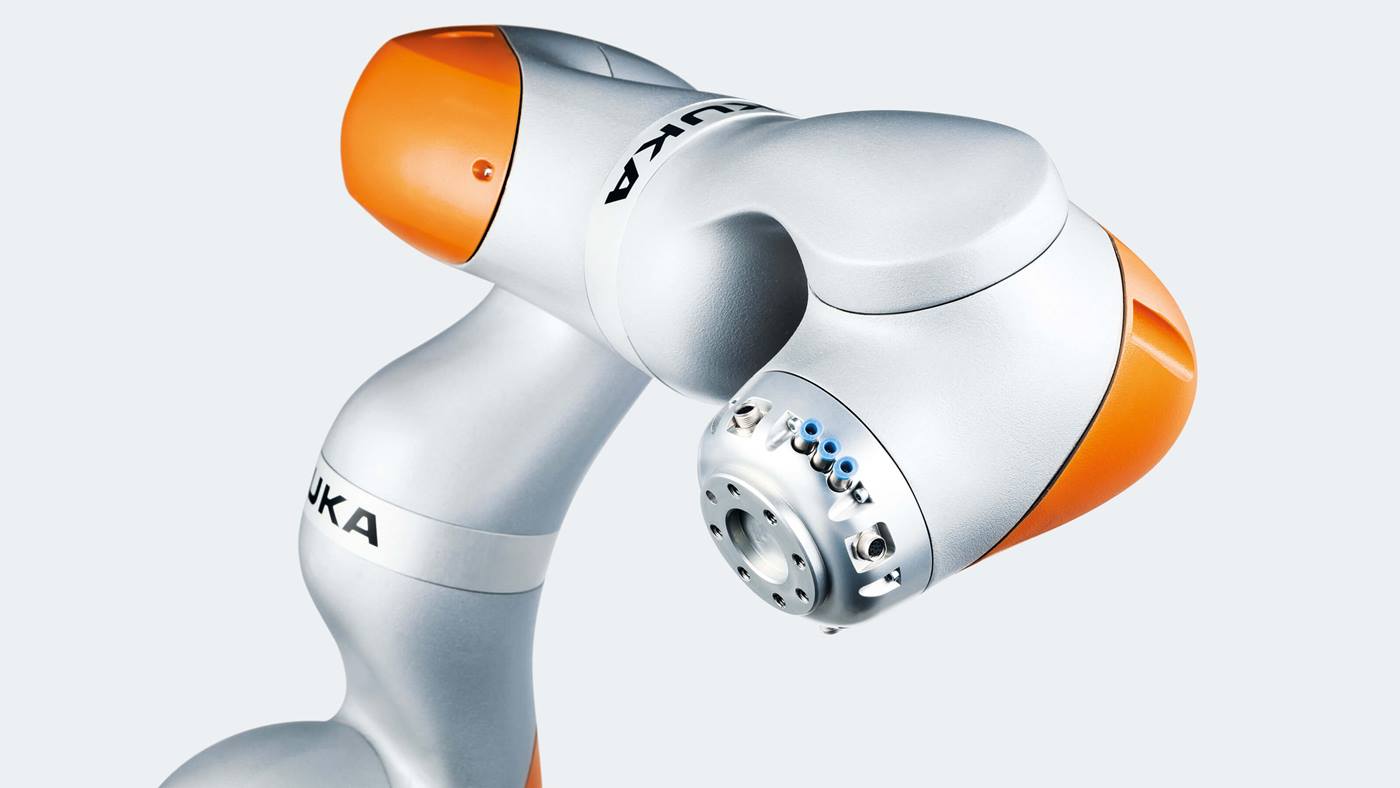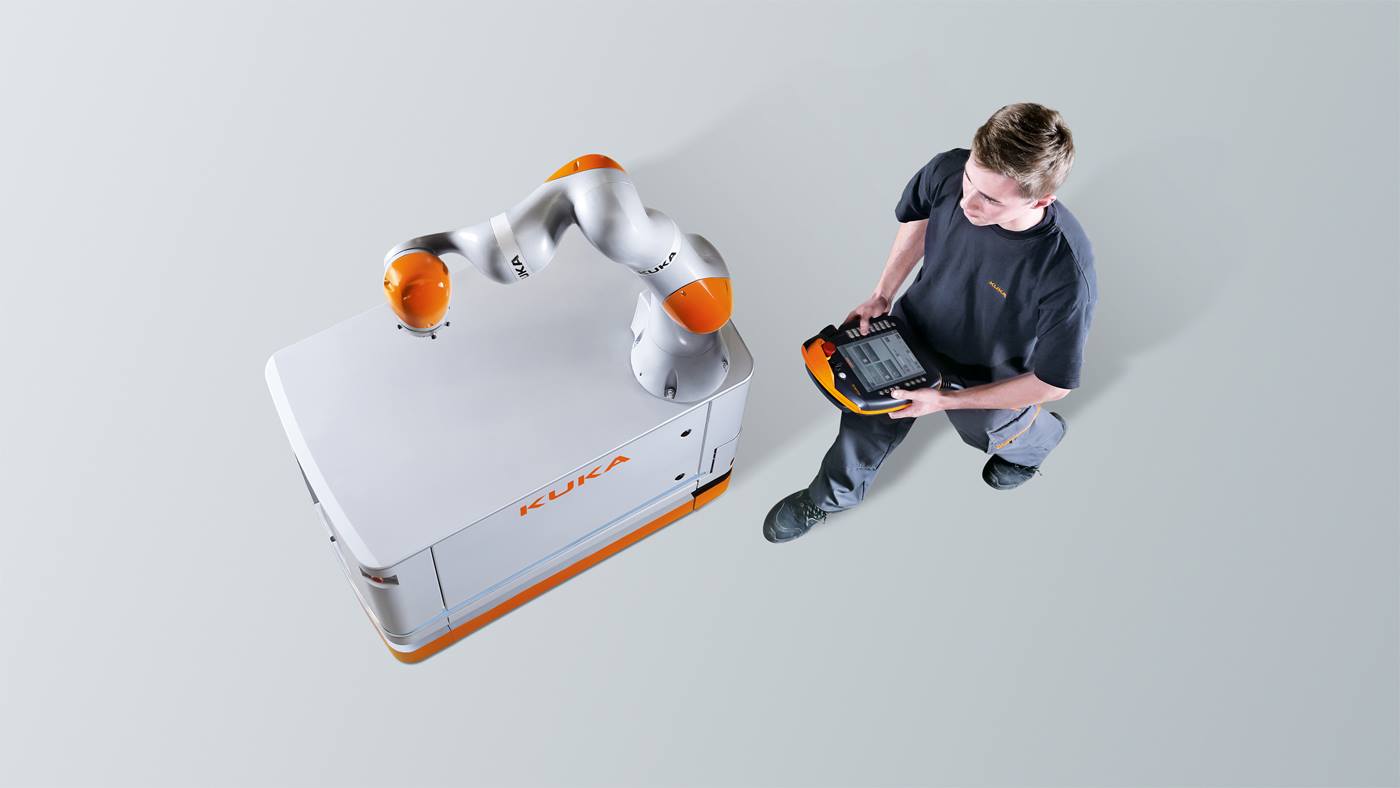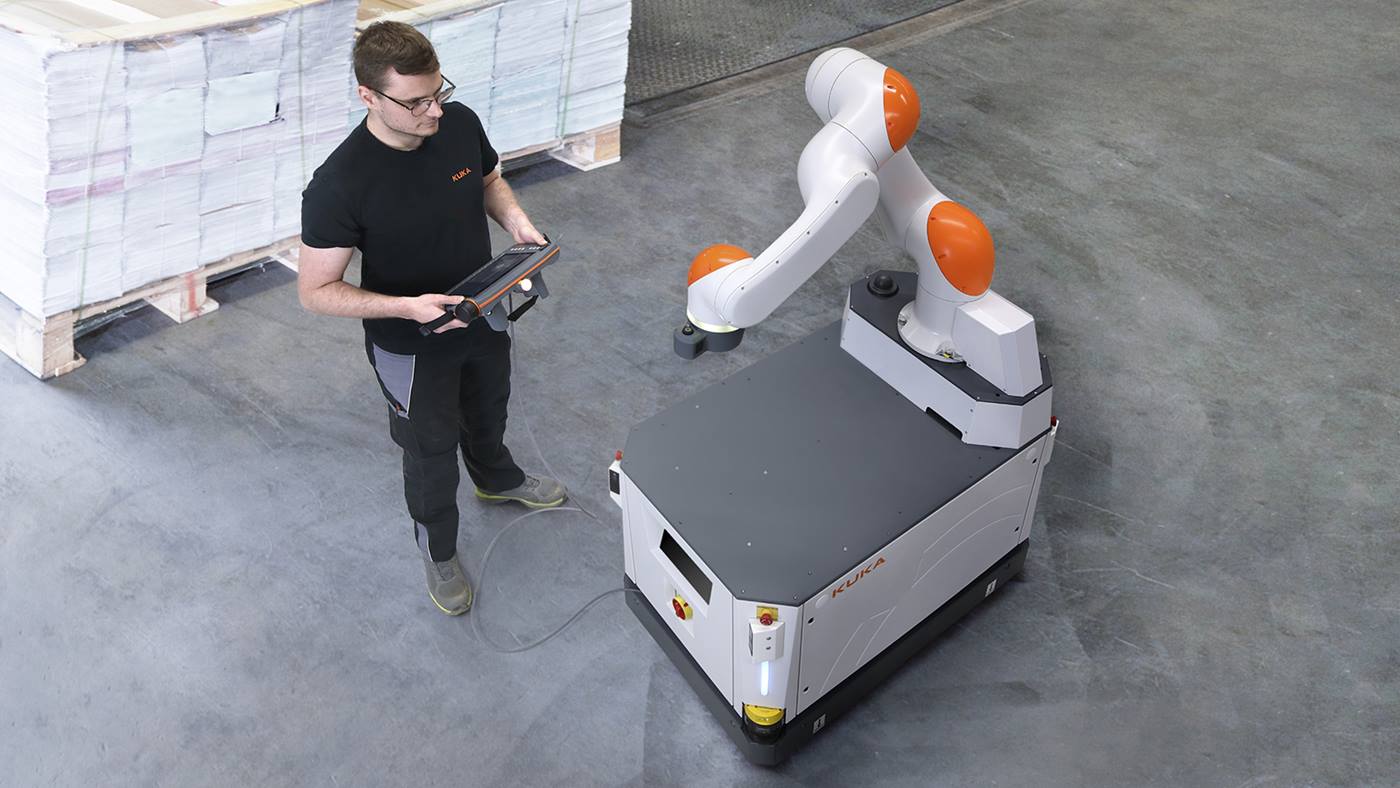Precise adhesive beads thanks to the seventh axis of the LBR iiwa
For the automated process of gluing the tank into place in final assembly, the skilled worker guides the tank to a turntable with the aid of a manipulator. There he cleans it, moves it into the correct position and transfers it directly to the robot for further processing. When the starting point is reached on the stationary tank, the nozzle opens under pressure so that no air bubbles are created. The robot then applies the adhesive bead onto the tank very evenly. Sensors on the application head monitor the accurate height of the bead. Thanks to its seventh rotating axis, the LBR iiwa glues in a radius of 360 degrees – without re-orienting or having to interrupt the bead. As soon as the LBR iiwa has completed its task, the skilled worker fits the tank into the vehicle body at the specified position.

